Women in Business Q&A: Sarah Pike of FreeFall Laser
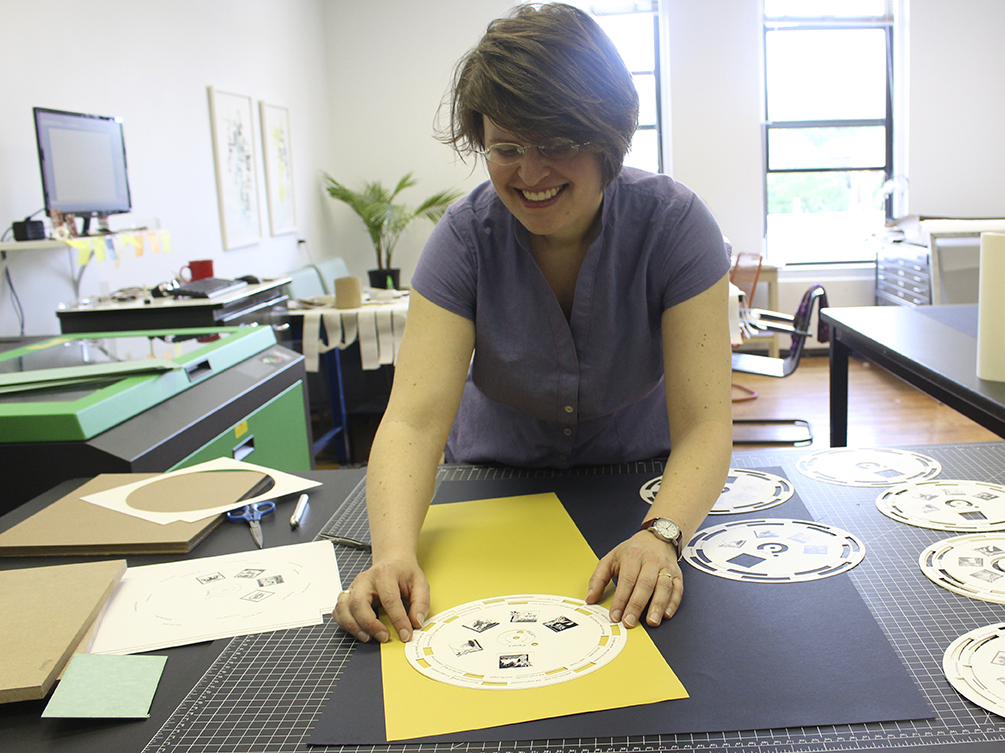
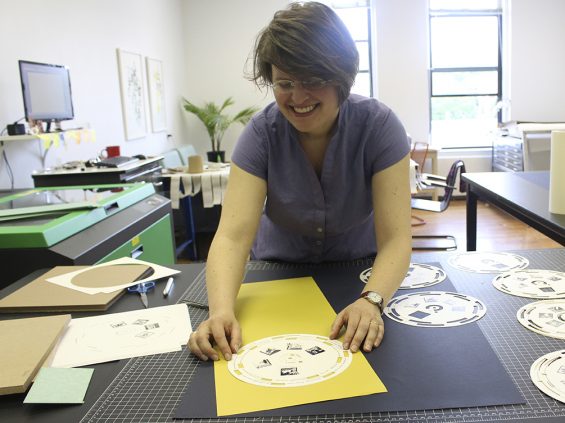
Sometimes you just have to close your eyes and take the leap.
That’s what artist Sarah Pike discovered a few years ago. After dedicating a large portion of her career to academia, the convergence of an economic downturn, university politics, and a serendipitous conversation with a colleague sparked an idea. She left behind the safety of a stable paycheck for some risky business: FreeFall Laser, a fine-art laser-cutting studio that creates intricate, complex, dimensional art from wood, leather, paper, fabric, acrylic, and more.
If you read laser-cutting and thought, Like those designs on dresses and tops that were everywhere a couple seasons ago? you’re not alone. Before I met and worked with Sarah, I had no idea a laser could be used to create art. Keep reading—and scrolling—for an eye-opening look her process, how she approaches business, and her unique perspective on the life of a creative, whether artist or entrepreneur.
Robin Catalano: You named FreeFall for the idea of taking a leap, without a parachute, into a new stage of your career. What motivated you to go into business for yourself? Describe your “a-ha” moment where you thought, “I’m on to something original here.”
Sarah Pike: For as long as I can remember, I wanted to teach art, and this was the career path I followed up until my great leap. Unfortunately, the combination the economic downturn, which led to hiring freezes and the shift in higher education to hiring adjuncts instead of full-time, made staying in academia unsustainable. Sometimes you have to make the risky decision to leave a job without one to go into, in order for the next path to open up.
In the transition, I attended artist residencies in Germany and Scotland. Before I returned home, I presented laser-cutting techniques for printmakers at the International Printmaking Symposium SNAP in Germany. It was in a chance conversation that one of the other participants suggested I open a laser-cutting business. When I started to research the kinds of laser-cutting businesses that were are out there, I learned that there wasn’t anyone else working with the types of techniques I had developed, and the fine art and artisan market was underserved. There was no way I could start a business that tried to compete with online laser-cutting companies like Ponoko, but the clients who need me need a level of one-on-one customization and understanding of artistic practices that those types companies don’t offer.
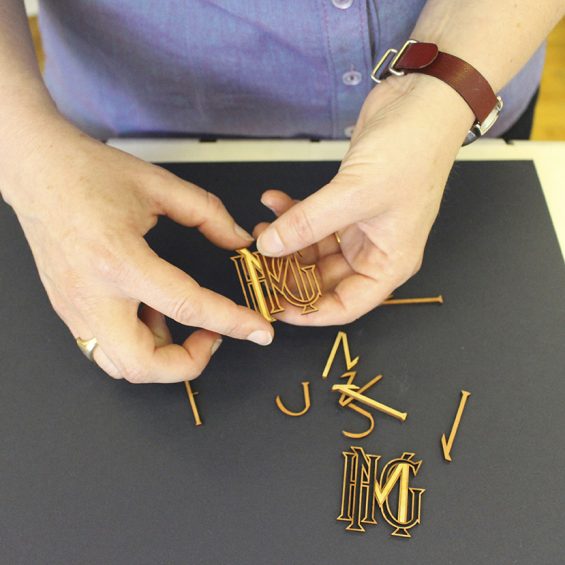
RC: How does being a working artist inform your approach to working with clients, whether fine art or commercial? Is this part of the key characteristics that make your business different?
SP: One of my first clients said to me early on in our collaboration, “It is such a relief that you understand bookbinding. I don’t have to keep explaining why I need things done in a particular way. You just get it.” Since I have a working knowledge of most of my clients’ artistic practices, each project is about developing individually strategies to create custom work for the client’s specific needs and materials.
I love creative problem solving and figuring out innovative solutions to challenging problems. There is nothing cookie cutter about my approach. As an artist, I understand aesthetic concerns, and my knowledge of art history is an asset when working with clients such as conservators. I also see ways of using the laser cutter that go beyond the basic applications it was made for. When an artist gets a hold of a tool, it isn’t just about learning how to use it well but also how to manipulate it to do other things.
I think artists are often considered bad businesspeople, but one of the unique things that being an artist requires is being able to juggle a lot of different types of work at the same time. Owning a business is all about keeping multiple balls in the air.
RC: Laser cutting is definitely a niche business! Have you found this to be mostly a positive or more of a challenge?
SP: One of the greatest assets to being in this niche is also one of its biggest challenges. The advantage of this niche is that my client base is underserved and there isn’t another company out there approaching laser cutting in an innovative, transformative way. As a result, my biggest hurdle is education. Most of my potential clients don’t know that the laser cutter can do much more than basic cutting. It’s amazing to see their eyes light up and the creative wheels start turning when they look at samples. Once a future client learns what is possible, it can take time for them to develop a project that uses laser cutting, which means that when I connect with someone, I can’t expect instant business.
I also come up against the intimidation factor. Most of my clients have studio practices that are hand based, and they are often not confident in their digital skills. It is easy to not reach out to a service if you feel intimidated or don’t know what questions to ask. It can also be frustrating to work with someone who doesn’t understand your working process, which is something artists experience when they work fabricators who come from an industrial or tech background. But, lucky for me, this is where my ability to bridge the gap between the hand and digital comes in. Plus, with years of teaching experience, I am good at breaking down complex information and empowering my clients to learn what they need to know to make the process easier.
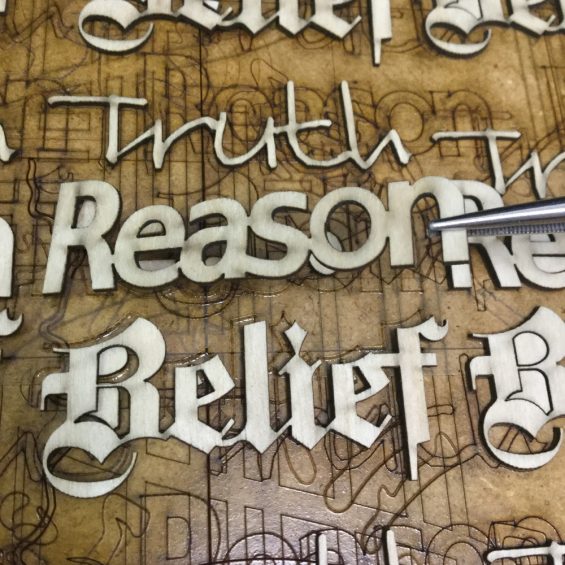
Laser cut wood veneer for artist book by client Thomas Parker Williams.
RC: Tell us about the different types of projects and services you offer.
SP: I specialize in custom laser cutting and engraving of a variety of materials—wood, paper, fabric, leather, acrylic, and much more. My collaboration with clients often includes project development and strategizing. For those who are not digitally savvy or have too much on their plate, I offer design services to create their laser-ready files.
I also offer Studio Sessions for artists who want to come work with me in the studio for a half, full, or multiple days. With my location down the street from MASS MoCA, artists can create their own mini weekend residency. Studio Sessions are great way to work out ideas and make new discoveries in real time. Many artists will use the Studio Session as a jumping-off place and finalize the design of the project when they return home. The project is then completed remotely, with me laser cutting and shipping the pieces.
RC: What were the most challenging parts of getting Freefall off the ground? What has changed most about the business—or you as a businessperson—since you founded it?
SP: One of the biggest shifts is happening not in my business but in how who I am as a businessperson is changing my approach to my studio practice. I started realizing that my internal grounding was far healthier in the business me than the artist me. Business me doesn’t seek outside approval or validation for what I do. I provide my own legitimacy based on who I am, how I work with people, and how innovative and hard I work. My artist self has been stuck measuring its self-worth based on the intangible validation of the illusive art world. Redefining my value as an artist and what this means for what I create and how it lives in the world is what I am working on now. I don’t have it all worked out yet, but I’m turning things around.
RC: What do you think are your biggest accomplishments in business?
SP: One of my most exciting projects was working with conservator Hugh Glover at the Williamstown Art Conservation Center, laser cutting replacement monograms for a pair of nineteenth-century piano stools designed by [Dutch artist] Alma-Tadema. The restored stools were included in an exhibition, Orchestrating Elegance, at the Clark Art Institute this past summer. This is just the kind of intricate work that bridges the gap between old and new technology, and calls upon my skills as an artist that I want to do more of.
Hugh and I am coauthoring a paper on the use of CNC and laser-cutting technology in conservation for the American Institute for Conservation Conference in Houston this spring.
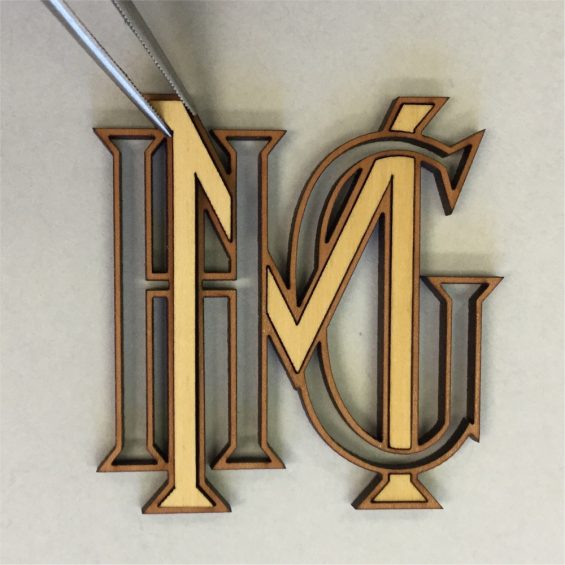
Laser cut inlay for restoration of nineteenth-century piano stools designed by Alma-Tadema, for the Williamstown Art Conservation Center.
RC: Is there any particular task that you love…any that you could do without?
SP: My favorite part is testing materials and developing new techniques. I tried delegating this to an intern once, which wasn’t a good decision. She did a fine job, but I learned that cutting myself off from this process was not a time saver. It’s when I’m testing materials, watching how the machine cuts or engraves, and seeing how I can push the machine to do something unusual that “What if I tried this?” ideas arise. It’s following these ideas that make my business different from the typical laser-cutting service.
When I give workshops, I make a big point of stressing the importance of step tests. You give away your artistry and limit the potential of the machine if you relay on factory presets. My business exists because when I first learned the technology five years ago, I took an exploratory approach, and I keep feeding this curiosity.
I could do without the relentless treadmill that is marketing and networking. It never stops, and, as an introvert, it takes a certain amount of psyching myself up to keep it going. One of the greatest gifts of networking is all the interesting, creative people I meet and how connecting with them, even if they never become clients, sparks my creativity. But that doesn’t change the fact that all that people time, in person or online, is exhausting.
RC: What type of marketing do you do to get the word out about your business?
SP: I do standard marketing, such as monthly newsletters, but much of my energy is spent directly contacting people through cold calls/e-mails. I also go on road trips and visit artists in their studios. Last year, I did a tour of wooden boat builders in Massachusetts and Rhode Island, and traveled to DC visiting printmakers and bookbinders on the way. Having a website is important, but there is no substitute for meeting someone in person and getting samples in their hands. When you primarily work with clients remotely, it’s important that they feel you are someone they can trust and communicate with.
One of my ventures for this year is to start making informational videos. I’m a real believer that understanding process expands creativity and how people envision applying the technology. When someone visits my studio I do a demo, so they can see how the machine works and the relationship between the laser-ready file and the final product. It makes a big difference in their understanding, but most people aren’t able travel to my studio to get that experience. Videos will let me reach more people and create a base level of understanding for when I start working with a client.
This past year I’ve been working with marketing coach Ilise Benun of MarketingMentor.com, who has not only helped me develop a marketing plan and strengthen my understanding of content marketing, but has also helped fill in the gaps in my business knowledge. It is one of the best investments I’ve made, and it wouldn’t have been possible without a professional development grant from Assets for Artists. If you are an artist or creative business owner both Ilise and Assets for Artists are an incredible resource. Check them out!
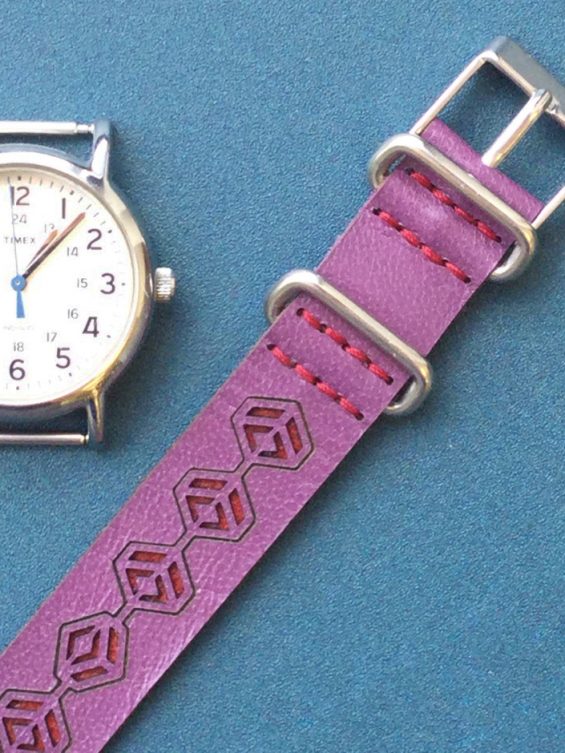
Laser cut leather watch band.
RC: Did you ever have a moment where you thought “This is too hard” or “I’m done with this”? How did you work through it?
SP: I haven’t hit a “too hard” moment yet, but this work sure does take a whole lot of fortitude. I had a lot of practice in cultivating fortitude in the years leading up to opening FreeFall, and I’ve got a good support team around me to help keep me going.
RC: How do you creatively recharge?
SP: There are times when I think it takes as much discipline to prioritize recharging as it takes to run the business. Starting the business coincided with a transition in my studio practice. I was at the end of a body of work and not sure where to go next. I spend a year in limbo, with not much to show for myself except a lot of false starts and talking myself out of ideas before trying them out. So last spring started small. I went for a walk in the woods after work most days and sketched with no preconceived idea of what it would turn into. I still haven’t made it to the end of the Money Brook Trail, because I keep stopping to draw. But in addition to lowering my anxiety, the simple practice of walking and sketching has led to a new body of work.
The week after Christmas I restricted myself to only one business-related activity, balancing the books, and committed the rest of the time to making silkscreen prints of my drawings. I really needed a focused amount to time to be in the studio to work out ideas though making lots of prints. Plus I have a show coming up at Keene State University in February! I’m well on my way to completing the work for that show and new ideas have developed that I’m looking forward to exploring further.
RC: What’s the worst (or least useful) piece of business advice you’ve ever been given, and what’s the best?
SP: The best business advice I got was way back when I finished graduate school. “It will take twenty no’s to get a yes. Collect no’s, not yeses.” Instead of seeing rejection as a defeat, I learned to see it as one step closer to a yes. I learned not to take rejection personally and to respond to rejection by saying, “What am I going to apply it to next?” What that advice also cultivates is gratitude. You aren’t owed anything. Every opportunity is a gift.
Follow Sarah Pike on Instagram, or sign up for her e-newsletter, Adventures in Laser Cutting